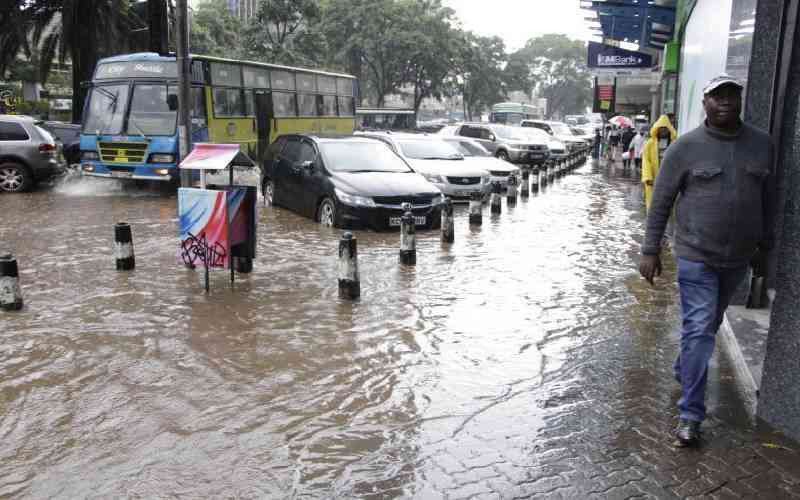Yet again, another building has collapsed in Nairobi, leaving in its wake a string of deaths. By late yesterday, police had put the death toll from the Huruma disaster at seven, but there is every indication this could rise given that part of the six-storey building collapsed when it was fully occupied by residents.
This latest tragedy will reignite debate over the shoddy workmanship of buildings in many of the country’s major towns, whose populations have risen rapidly as urban centres grow in tandem with an expanding economy. This expansion, although desired, has often come with drawbacks that sometimes needlessly compromises safety.
For instance, Nairobi Governor Evans Kidero says some of the buildings that have collapsed, have encroached and obstructed riparian reserves, natural water courses and drainage way leaves, ultimately blocking access of drainage water to disposal lots.
The governor is concerned that solid waste consisting excavated soils is indiscriminately disposed of, even as developers direct construction debris and garbage onto water courses and sewerage system. Unsupervised, poorly constructed and undersized storm water drainage infrastructure also contributes to these accidents.
The Nairobi governor does not leave it there and blames other government agencies for contributing to the poor state of some structures. He says the passage of water pipes, telecommunication cables and other services through drainage infrastructure erodes the quality of structures developed above these networks.
It is all very well for the governor to highlight some of these factors that contribute to the degradation of buildings and compromise their safety standards. However, this response after another tragedy in an area where officers of the Nairobi County Government superintend seem rather churlish, especially because had the county’s inspectorate unit been more vigilant, perhaps the construction of these developments may have been halted.
Officials all too often attribute disasters to a poor regulatory environment when those tasked with ensuring compliance turn the other way when cases of non-compliance are brought to their attention. How often do we see buildings that have been condemned for demolition irregularly receive certifications of approval?
Corruption within inspectorate units in counties is endemic and one can hazard that many of these tragedies can be averted if this issue is addressed.
We must expect more rigour when inspectors tour newly-constructed buildings so that structures whose quality is compromised do not receive occupation certificates.
Therefore, authorities must ensure that the blocking of drains for urban agricultural activities is stamped out altogether even as they attempt to minimise establishment of informal settlements on low lying areas and flood plains. More should be done to stop physical developments that have preceded the development of supporting infrastructure such as roads and drainage.
And when structures that do not comply with the building code have been put up, there must be swift action. County governments must go a step further and ensure that these buildings are demolished before they put the lives of residents at risk.
As deterrence, stiffer sanctions should be imposed on those behind their construction, whether it is the owners, the architects, the structural engineers or other professionals.
No one should be allowed to take cost–cutting shortcuts during construction and put the lives of house occupiers at risk.
 The Standard Group Plc is a
multi-media organization with investments in media platforms spanning newspaper
print operations, television, radio broadcasting, digital and online services. The
Standard Group is recognized as a leading multi-media house in Kenya with a key
influence in matters of national and international interest.
The Standard Group Plc is a
multi-media organization with investments in media platforms spanning newspaper
print operations, television, radio broadcasting, digital and online services. The
Standard Group is recognized as a leading multi-media house in Kenya with a key
influence in matters of national and international interest.
 The Standard Group Plc is a
multi-media organization with investments in media platforms spanning newspaper
print operations, television, radio broadcasting, digital and online services. The
Standard Group is recognized as a leading multi-media house in Kenya with a key
influence in matters of national and international interest.
The Standard Group Plc is a
multi-media organization with investments in media platforms spanning newspaper
print operations, television, radio broadcasting, digital and online services. The
Standard Group is recognized as a leading multi-media house in Kenya with a key
influence in matters of national and international interest.









